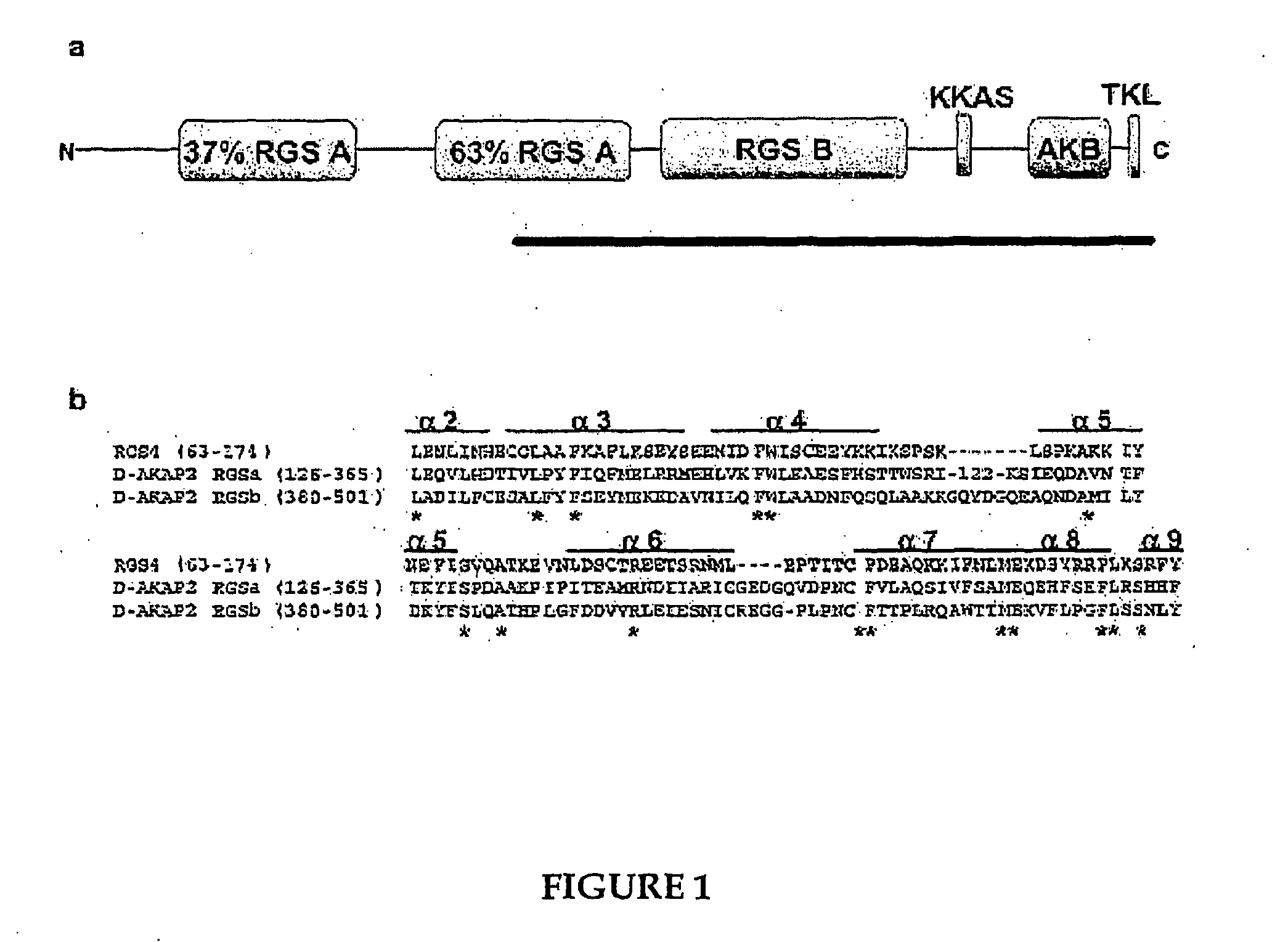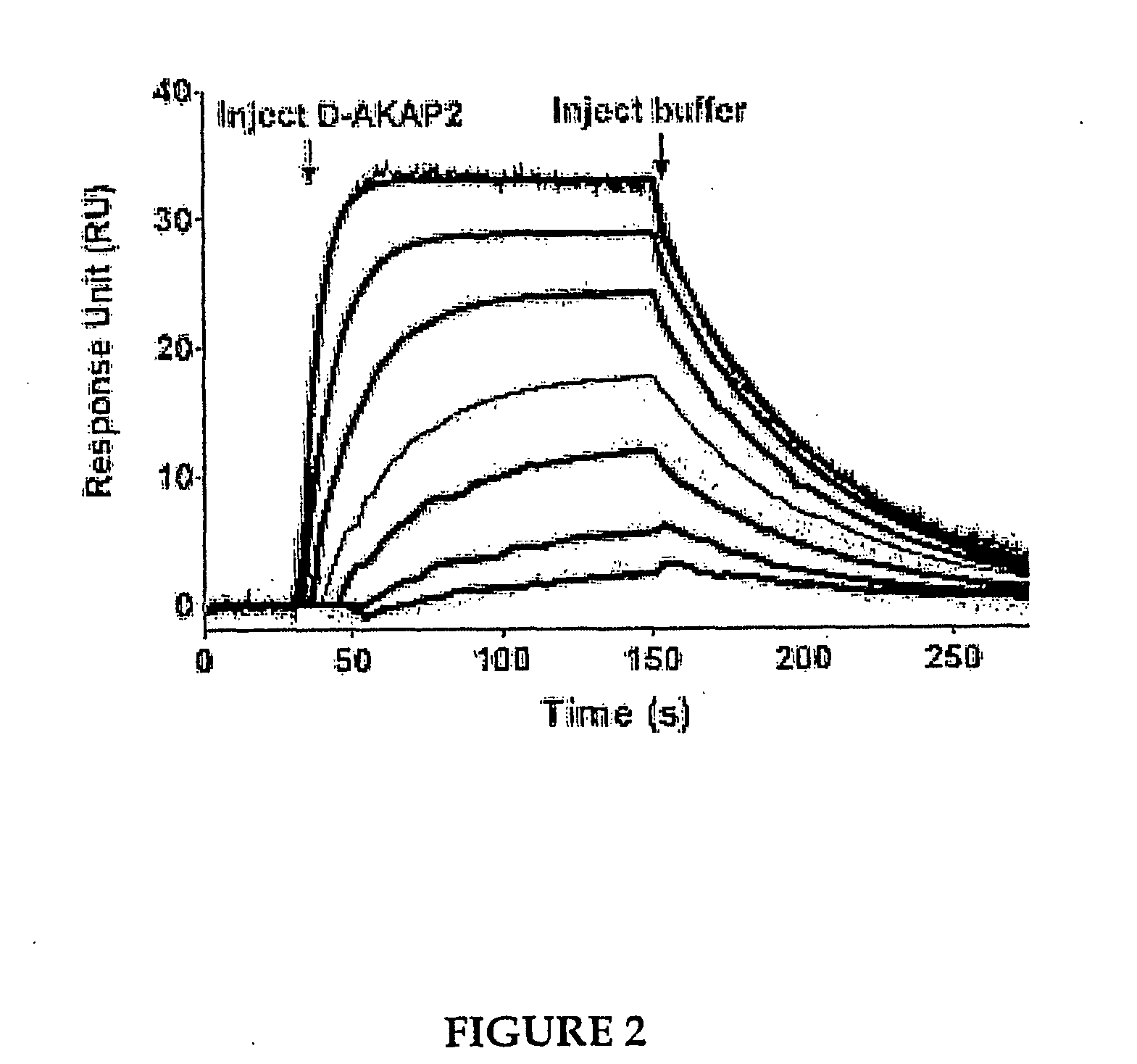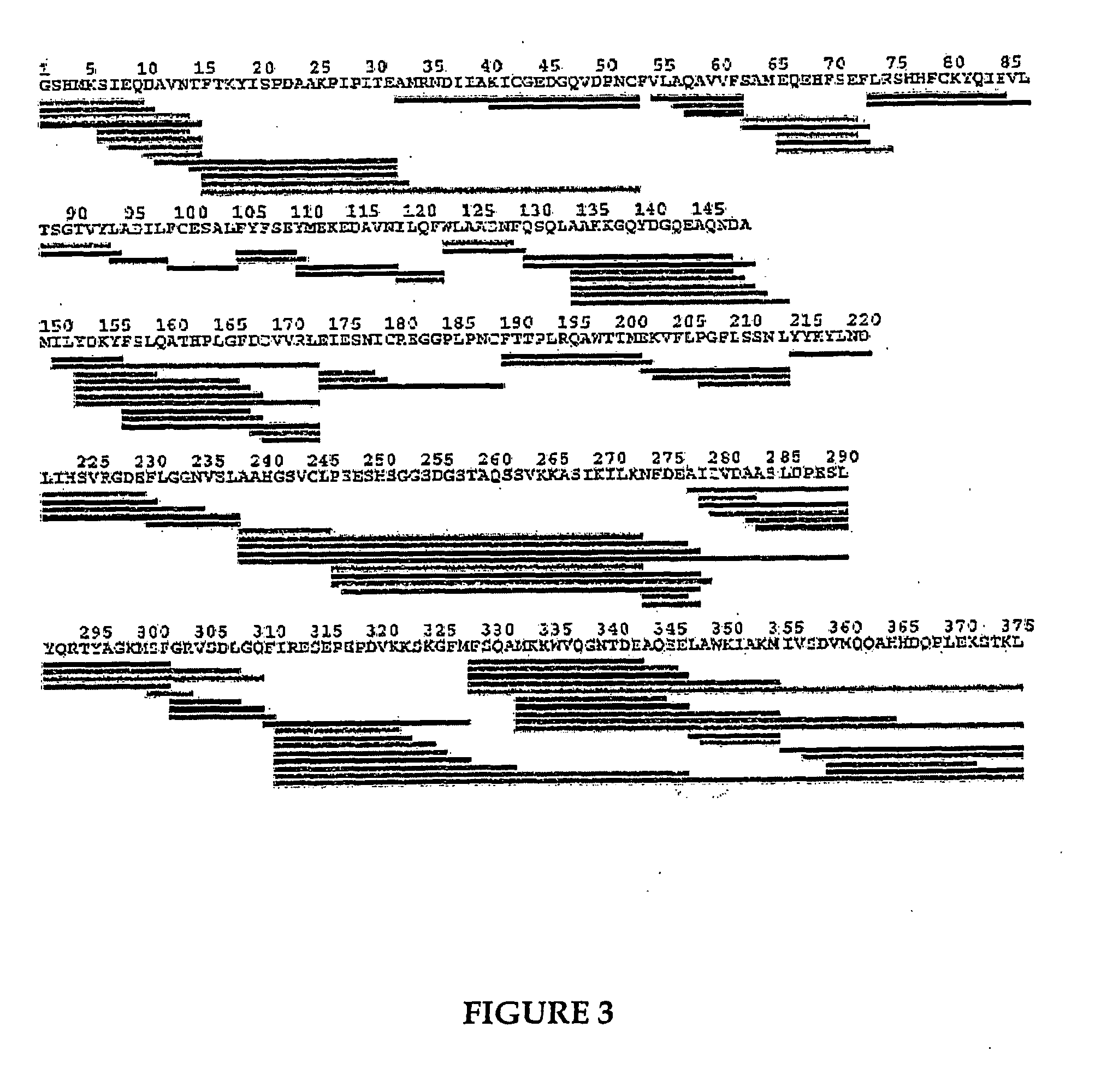Methods for high resolution identification of solvent accessible amide hydrogens in polypeptides and for characterization of polypeptide structure
- Summary
- Abstract
- Description
- Claims
- Application Information
AI Technical Summary
Benefits of technology
Problems solved by technology
Method used
Image
Examples
example 1
Protein Expression and Purification
[0218] The sequence of mouse D-AKAP2 (Genbank Accession No. AF021833) was sub-cloned into pET-15b (Invitrogen), using NdeI and XhoI restriction sites after mutating an internal NdeI site. As a result of cloning, three non-native amino acids were attached to the N terminus of the protein after thrombin cleavage. The plasmid was transformed into BL21 (DE3) cells (Novagen) and grown in LB medium with 100 μg / ml of ampicillin at 37° C., 300 rpm. The cells were induced at 0.8 (A600 nm) with 0.5 mM IPTG and the protein expressed for five hours at 24° C. Six liters of culture were pelleted and lysed in 100 ml of lysis buffer (20 mM Tris (pH 8.0), 150 mM NaCl, 5 mM benzamidine) using a French press (1000 psi:1 psi ≈6.9 kPa). The lysate was centrifuged at 17,000 g for 30 minutes at 4° C. The protein was purified from the supernatant using Talon resin (Clontech) and the histidine (His) tag cleaved with three milligrams of thrombin (Sigma). The protein was di...
example 2
[0220] The spectrum was obtained using an AVIV 202 spectropolarimeter in a 0.1 cm rectangular, quartz cuvette (AVIV). The time constant for data collection was 100 ms with a 4 seconds averaging time. Three acquisitions were averaged. The buffer (20 mM NaPO4, 150 mM NaCl, pH 7.0) spectrum was subtracted from the sample spectrum The protein concentration was 2 μM. The mean residue ellipticity (MRE) was calculated according to the following equation:
MRE=θobs(M / 10lcn)
where ζobs is the buffer corrected ellipticity, M is the molecular weight (42,800 Da) of D-AKAP2, 1 is the pathlength, c is the concentration (in molarity) and n is the number of amino acid residues in the protein.
example 3
Limited Proteolysis and Boundary Mapping
[0221] D-AKAP2 (0.85 mg / ml) was digested separately with both trypsin (Worthington Biochemical Corporation) and endoproteinase Glu-C (Boehringer Mannheim) in a 1:100 (w / w) ratio. At various time-points, aliquots were taken and quenched with 10% (v / v) glacial acetic acid for the trypsin digests or quick-frozen on solid CO2 for the endoproteinase digests. The samples were analyzed by SDS-PAGE and by liquid chromatography-mass spectrometry (LCMS). For each of the various digest time-points, 5.0 μg of total digested protein was loaded onto a Michrom BioResources Magic 2002 microbore HPLC system (Auburn, Calif.) equipped with a 1.0 mm×150 mm Vydac C4 column (5 μm, 300 Å), equilibrated at a flow rate of 50 μl / min and a column temperature of 35° C. A gradient from 10 to 80% solvent B over 60 minutes was then initiated (solvent A, 2% (v / v) acetonitrile, 0.1% (v / v) trifluoroacetic acid (TFA); solvent B, 90% acetonitrile, 0.095% TFA). The eluent from t...
PUM
 Login to View More
Login to View More Abstract
Description
Claims
Application Information
 Login to View More
Login to View More - R&D
- Intellectual Property
- Life Sciences
- Materials
- Tech Scout
- Unparalleled Data Quality
- Higher Quality Content
- 60% Fewer Hallucinations
Browse by: Latest US Patents, China's latest patents, Technical Efficacy Thesaurus, Application Domain, Technology Topic, Popular Technical Reports.
© 2025 PatSnap. All rights reserved.Legal|Privacy policy|Modern Slavery Act Transparency Statement|Sitemap|About US| Contact US: help@patsnap.com



